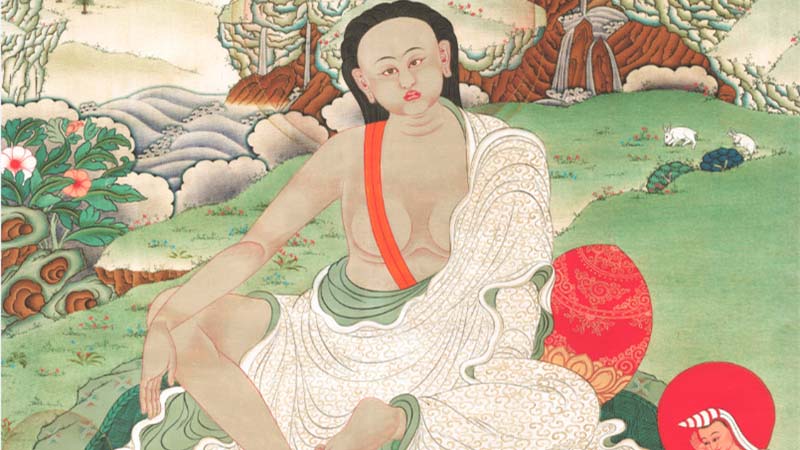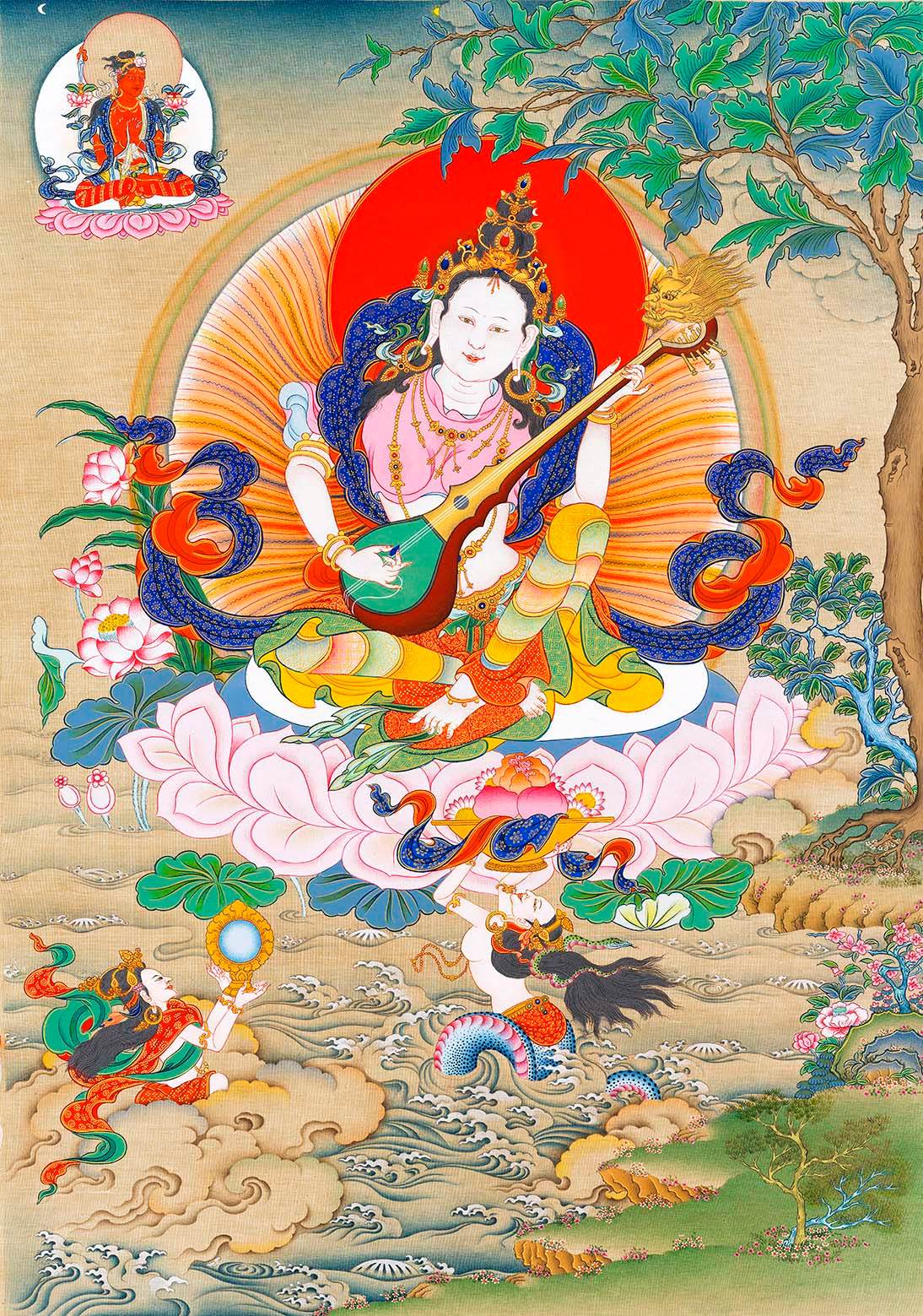
Milarepa: The Singer of Enlightenment—From Darkness to Radiant Light
Milarepa,
Tibet’s great yogi and poet, embodies the power of redemption and unwavering perseverance. His life is a testament to the possibility of enlightenment in a single lifetime, even after grave misdeeds.

Click here to shop milarepa thangka
Introduction to Milarepa
Milarepa (Tibetan: མི་ལ་རས་པ་) is one of Tibet’s most revered saints and a central figure in the Kagyu lineage of Tibetan Buddhism. Known as the "Cotton-Clad Sage," he spent years meditating in solitary caves, wearing only a thin cotton robe. His extraordinary journey—from a vengeful magician to a fully enlightened master—inspires millions as a story of purification, devotion, and the transformative power of Buddhism.
The Life and Legacy of Milarepa
Milarepa’s early life was marked by tragedy and revenge. After his family was wronged, he mastered black magic to destroy his enemies. Overcome with remorse, he sought the great teacher Marpa the Translator, who subjected him to years of extreme trials to purify his negative karma. Through unwavering devotion and arduous practice, Milarepa attained enlightenment in one lifetime.
His later years were dedicated to meditation and teaching through spontaneous songs of realization, known as The Hundred Thousand Songs of Milarepa. These poetic teachings convey profound Buddhist truths in simple, heartfelt verses.

The Symbolism of Milarepa
Green Skin: In paintings, Milarepa is often depicted with a greenish hue, symbolizing his diet of nettles during years of solitary meditation and his harmony with nature.
Right Hand to Ear: This gesture represents his role as a divine singer, transmitting wisdom through song.
Cotton Robe: Signifies simplicity and resilience—his ability to endure harsh climates through inner warmth (tummo).
Meditation Caves: A symbol of retreat, inner transformation, and the power of solitude.

The Mantra of Milarepa
While Milarepa did not have a specific mantra like Tara, one widely associated with him is:
"Om Ah Guru Hasa Vajra Hung"
This mantra invokes the blessings of Milarepa and the Kagyu lineage, supporting devotion, perseverance, and swift progress on the path.
How to Connect with Milarepa
Study His Life: Read The Life of Milarepa and The Hundred Thousand Songs to understand his journey.
Chant His Name or Mantra: Recite his name or the Kagyu mantra to invoke his blessings for strength and purification.
Meditate on His Image: Visualize him in his cave, radiating light and singing wisdom, inspiring your own practice.
Embrace Hardship as Path: Learn from his life—see challenges as opportunities for growth and purification.

Conclusion
Milarepa’s life teaches that no one is beyond redemption. His journey from darkness to light reminds us that sincere practice and devotion can transform even the heaviest karma into the path of awakening.
May the perseverance and wisdom of Milarepa inspire your spiritual journey!
Have you read the songs or life story of Milarepa? How does his journey resonate with you?
Share your thoughts below!






